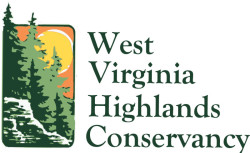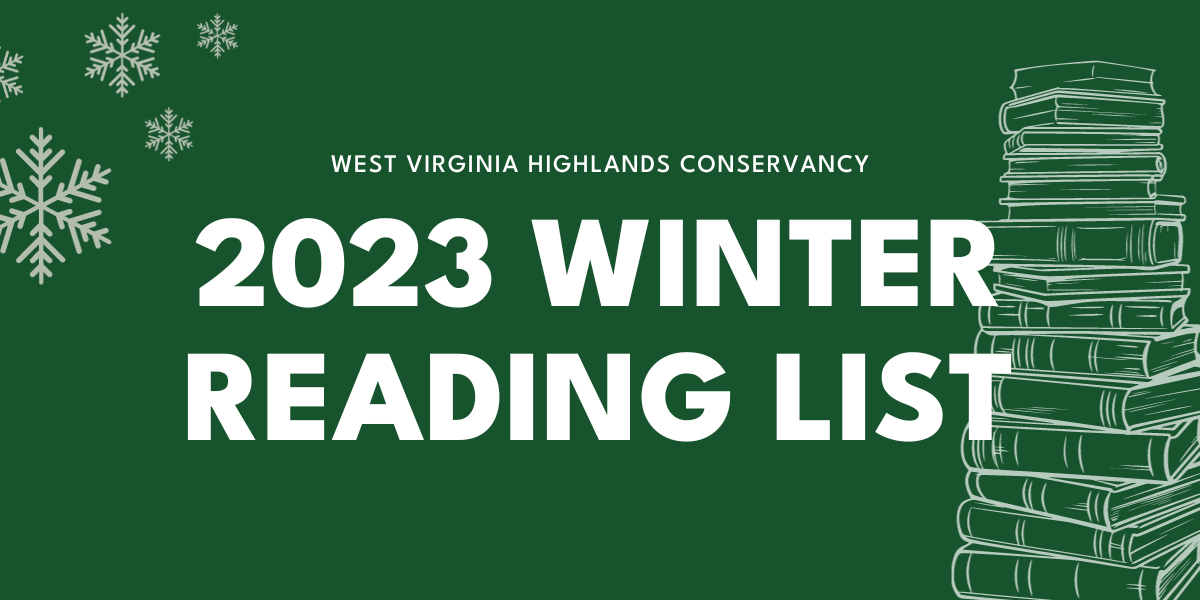As winter sets in and blankets the West Virginia Highlands in snow, past and present board members of the West Virginia Highlands Conservancy have curated a list of ten books that promise to inspire and connect you closer to nature during these long, cold nights. From Joyce M. Barry’s compelling “Standing Our Ground,” which illuminates the courageous role of women in the fight against mountaintop removal, to Richard Powers’ powerful Pulitzer Prize winning “Overstory,” this list spans a diverse range of perspectives and narratives.
The books named in this selection have helped our members deepen their own understanding of conservation and the pressing environmental challenges that call for our collective action. We hope there is something for everyone to enjoy.
“Bringing Nature Home – How You Can Sustain Wildlife with Native Plants” by Douglas W. Tallamy
A practical, informative and beautifully illustrated guide to bringing native plants into your home garden. The author does a fantastic job explaining how plants, trees, insects, birds and larger animals all can benefit from replacing exotic and non-native plants with natives. The incredible bug photography alone is worth the purchase price! In its 16th printing, it is essential reading for anyone interested in creating biodiversity around their home.
Recommended by Luanne McGovern
“Smokescreen: Debunking Wildfire Myths to Save Our Forests and Our Climate” by Chad Hanson
This is a book about forest fires—how we talk about them, how we think about them, and, most importantly, public policy toward fire control and suppression. Any discussion about fire inevitably leads to a discussion of logging, including how we manage logging on public lands. There is also discussion of how logging policy impacts climate change. Some of the ideas in the book are contrary to conventional wisdom. The unconventional ideas are supported by research which is cited in the book.
Recommended by John McFerrin
“Standing Our Ground: Women, Environmental Justice, and the Fight to End Mountaintop Removal” by Joyce M. Barry
This organization, WVHC, wants to save mountains; so do the women depicted in this book. A number of us marched with them, attended meetings and protests with them, and found comfort in our common purpose. Touching on history, economics, and global implications, the author sketches important themes for all of us interested in preservation of our landscape and communities in our state. The preface quotes Denise Giardina, “You are flattening our mountains and filling in our hollows, and this is the last evil you will do.”
Recommended by Cindy Ellis
“Brave the Wild River: The Untold Story of Two Women who Mapped the Botany of the Grand Canyon” by Melissa L. Sevigny
A well-written descriptive account of the 600-mile trip down the Colorado River in 1938, two years after the Hoover/Boulder Dam was completed. Three homemade cataract boats with six people were used for the two-month journey. The trip was intended to be an adventure coupled with plant collections by two women botanists from the University of Michigan.
Recommended by Patricia Gundrum
“Winter World: The Ingenuity of Animal Survival” by Bernd Heinrich
Cindy Rank describes this book as, “science written with grace.” “Beautifully illustrated throughout with the author’s delicate drawings and infused by his inexhaustible enchantment with nature, Winter World: The Ingenuity of Animal Survival awakens the wonders and mysteries by which nature sustains herself through winter’s harsh cruel exigencies.”
Recommended by Cindy Rank
“Death and Life of the Great Lakes” by Dan Egan
This book is about fish management in the Great Lakes. Historically the Lakes were an isolated ecosystem since any immigrant species would have to go up Niagara Falls to reach them. Then there was a canal around the falls and the reversal in flow of the Chicago River and the Great Lakes were open to invasive species on both ends. Species came in on boats, other species were introduced intentionally, they interacted, etc. There are lots of facts and ideas about ecology. There are also enough little anecdotes about the people involved, etc. to keep it light and prevent it from turning into a monograph on fish ecology.
Recommended by John McFerrin
“Encounters with the Archdruid” by John McPhee
“Encounters with the Archdruid” by John McPhee is a captivating exploration of the ideological battles waged by environmentalist David Brower against proponents of resource exploitation and unbridled development. McPhee’s narrative brings to life three distinct encounters that define Brower’s unwavering commitment to wilderness preservation. From clashing with a pragmatic miner in Glacier Peak Wilderness, Washington, to resisting a real estate developer’s plan for Cumberland Island, Georgia and ultimately facing off against the United States Bureau of Reclamation’s commissioner, Floyd E. Dominy, Brower’s struggles underscore the perpetual tension between human progress and the imperative to protect the environment. McPhee’s masterful storytelling, seamlessly blending journalistic rigor with fictional elements, makes this narrative nonfiction a compelling and enduring exploration of the complex interplay between societal needs and the preservation of our natural world.
Recommended by Andrew Young
“The Journal 1837-1861” by Henry David Thoreau
This book was my winter reading project a couple of years ago. I read it every night, chronologically through the twenty-four years. It was a happy choice. Thoreau is only twenty when the journal begins, and he is less than a year away from his death (tuberculosis) when it ends. I felt I was growing up with him. Over 700 carefully-chosen pages, we see the local world of Concord and Concord in the world, town-woods-rivers-farms, through his eyes, his opinions, his quotable prose. It’s a wonderful record of a gifted, idiosyncratic, sympathetic mind at work.
Recommended by Hugh Rogers
“Half Earth, Our Planet’s Fight for Life” By Edward O. Wilson
A pretty easy read, very informative and important to anyone who is concerned about sustaining levels of biodiversity on our planet. One of the world’s preeminent naturalist and biologist, EO. Wilson is a master of discovery and he offers profound insights into the earth and its inhabitants, and the criticality of preserving the earth’s biodiversity. He writes about some of the newly discovered species living a mile below the subterranean bottom of the Mariana Trench and in the closing sentences of Chapter 14 offers a glimmer of hope for us, (although you might not immediately recognize it). Part of the book is devoted to an educational travelogue of some of the biologically special palaces in earth’s biosphere and what aspects make each of them special. Wilson offers some optimistic solutions to maintain a balanced earth, stem the loss of biodiversity and avert some of the calamitous consequences attendant with Anthropocene era.
Recommended by Randy Kesling
“Overstory” by Richard Powers
This is a true tree huggers book. It is fiction but refers a lot to true history about environmental issues and fights. It is just delightful to read. Overstory won the 2019 Pullitzer for fiction. The prose is lyrical. My two favorite novelists: Barbara Kingsolver and Ann Patchett wrote glowing statements about it.
Recommended by Beth Little

